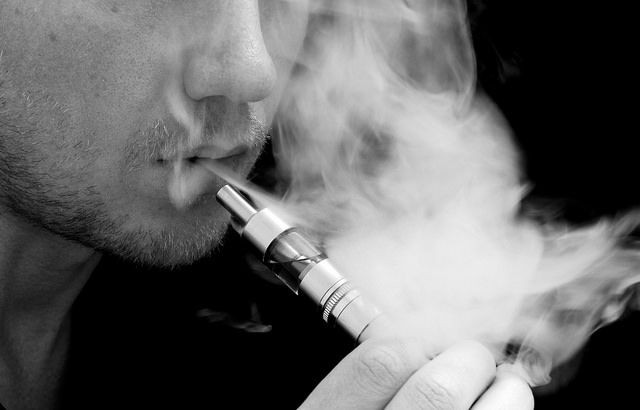Teens Who Use E-Cigs Three Times More Likely To Pick Up Tobacco Cigarettes A Year Later

A vape today may mean a puff of the real deal tomorrow — at least if you’re a teen.
A new survey of Hawaiian high schoolers published Monday in Tobacco Control has found that those who admitted to using e-cigarettes at least once were three times more likely to experiment with tobacco smoking a year later than those who never indulged in e-cigarettes at all. Likewise, regular e-cigarette use was linked to a greater probability of regular tobacco smoking a year later. Researchers were unable to find any evidence that e-cigarettes helped people quit smoking, despite a common claim to the contrary. Among teens who smoked both types of cigarettes, there was no substantial reduction in tobacco smoking frequency over a year’s time.
“The present results converge with findings from other studies of adolescents and provide support for the hypothesis that e-cigarette use may promote initiation of smoking,” the researchers wrote.
Hailing primarily from the University of Hawaii in Honolulu, the authors decided to take a longer look at the potential relationship between e-cigs and their tobacco counterparts than earlier research. Recruiting the help of six high schools in the area, they surveyed 2,338 students, primarily 9th and 10th graders, about their cigarette habits as well as other factors known to predict drug use, such as parental support and the students' degree of rebelliousness. They returned a year later to see whether and how these answers changed among the 2,239 students who stuck around.
At the beginning, 15 percent of students admitted to tobacco use and 31 percent to e-cigarettes; a year later, it became 21 percent and 38 percent respectively. When the researchers looked deeper and accounted for other variables, they found that the probability of people smoking tobacco was 5 percent if they never used e-cigarettes, and 14 percent if they had at least once. For regular e-cigarette use (34 percent of users), that probability jumped to 19 percent.
This increased risk was independent of other factors like gender, parental support, and parental education, though the chance of becoming a smoker was also influenced by a teen’s rebelliousness, age, and ethnicity. Caucasians and native Hawaiians were more likely to become smokers compared to Asian Americans. The perception that e-cigarettes were healthier also predicted an uptake in e-cigarette use and the dual use of both; 68 percent of the students polled believed that e-cigarettes were safer than a conventional sin stick.
The exact reasons why e-cigarettes serve as a gateway drug to tobacco for teens still aren’t clear, though the authors note there are several likely explanations: “One is that some e-cigarettes mimic the look and feel of cigarettes, and the inhaling and exhaling of e-cigarette aerosol produces some of the same sensory experiences as smoking a cigarette,” they wrote. “Additionally, nicotine exposure via e-cigarettes, even at lower levels, may sensitize adolescents to its effects. If adolescents begin to experience mild physiological effects from nicotine they may be inclined to shift to cigarettes in order to get a bigger ‘kick.’”
The researchers hope their findings highlight that “e-cigarette use among adolescents is not without behavioural costs.”
Electronic cigarettes have been tied to a myriad of potential health problems in recent months, both likely due to their similarity to tobacco cigarettes and their own unique design.
Source: Wills T, Knight R, Sargent J, et al. Longitudinal study of e-cigarette use and onset of cigarette smoking among high school students in Hawaii. Tobacco Control. 2016.



























